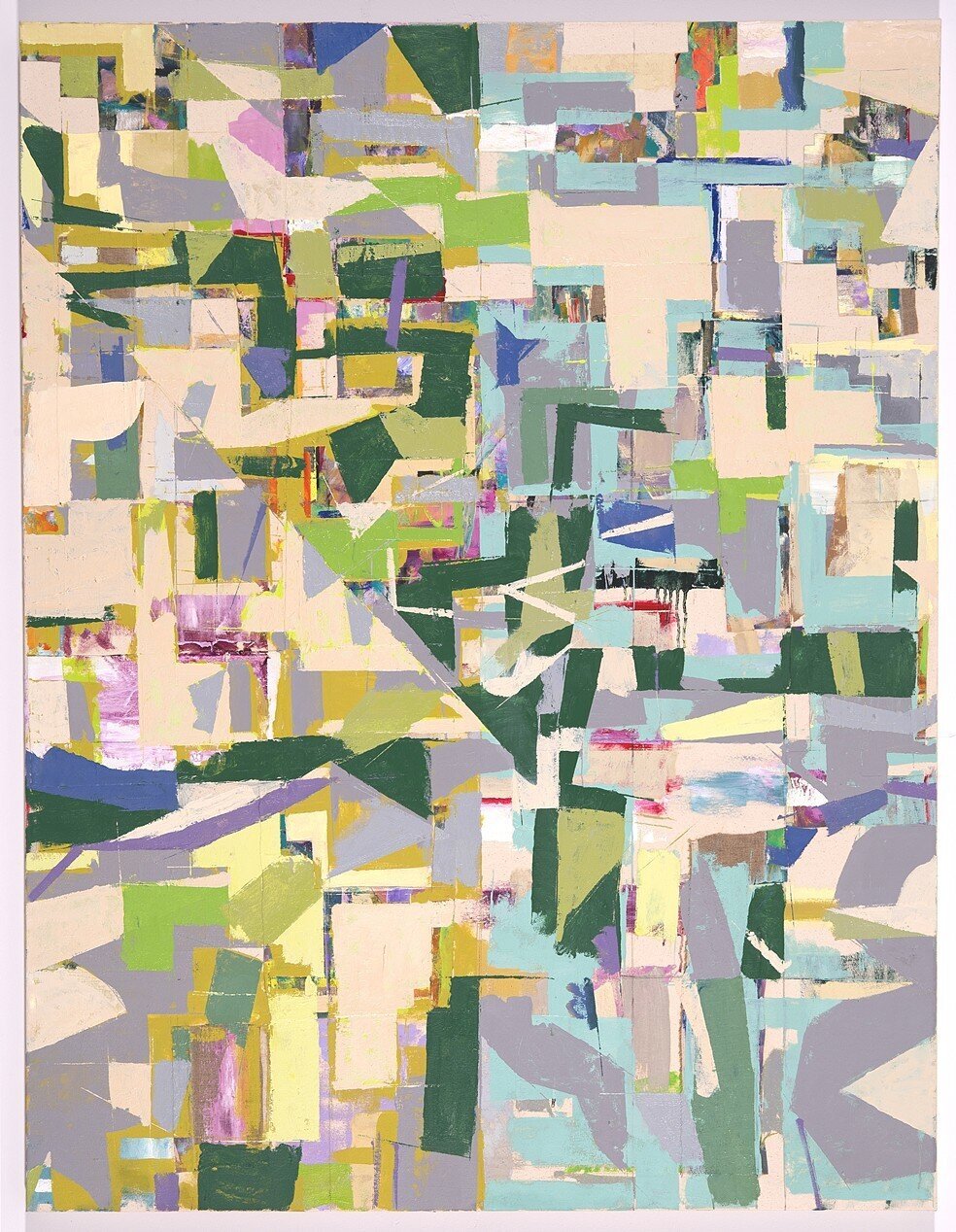Thousands of Little Folds: Sam King at Lower Columbia College
May 4, 2021
Tucked away in the blue collar town of Longview, Washington, the Forsberg Art Gallery is a gorgeous exhibition space on the campus of Lower Columbia College. Admittedly, the gallery was not on my radar until my own college painting mentor and former teacher announced his show there. Gallery director Jennie Castle tells me she came onboard a couple years ago and has been working to broaden the scope of the gallery and bring in artists from across the country. Up for just a couple more days, Sam King’s Thousands of Little Folds represents exactly the kind of energy needed on the campus of a small college. King and I would know, having worked closely together at a small college in Arkansas to develop a brand new studio art degree in 2010. As a teacher and mentor, King always approached painting with conviction and solemnity but equally levity and play, all of which rubbed off on me and are on display in the exhibition.
Untitled, oil on linen and canvas, 60” x 46”, 2020
The paintings in the show are mostly large scale, abstract, and feature layers and layers of collaged canvas and paint. They have no gravity and instead appear like fractals or kaleidoscopes, painted with a sense of all-overness that lends itself to an absorbing visual experience, i.e. standing close and letting your eyes get lost in the colors and forms. The surfaces allude to a process of churn and transformation, of construction and excavation alike.
Untitled, oil on linen and canvas, 60” x 46”, 2020
Untitled, oil on linen and canvas, 60” x 46”, 2020
What’s remarkable to me about this body of work is the way that each piece relates to the whole while simultaneously expressing its own discrete vibes. Especially between the two Untitled paintings pictured above. On the left there is a lot of angst and grief, aggressive marks existing alongside flat areas of black obscuring bright and saturated bits. It is a literal and metaphorical struggle with Darkness. But on the right we see a composition dominated by colors of spring, nothing darker than forest green. The forms suggest, but do not show, air and light, a landscape, concrete and trees. “I am interested in the human need to make information meaningful,” King says, “and I tend to work at the edge of where that happens.” This holds true of the paintings in this show, for if any of them were pushed any further toward the abstract, they might be read as pure non-objective paintings i.e. paint seen purely as paint. But as they exist, this group of work hints at the recognizable, allowing the viewer to exercise whatever human faculty it is that makes sense of visual stimuli. They allow us to make sense of nonsense. A blessing.
Untitled, oil on linen and canvas, 60” x 46”, 2020




